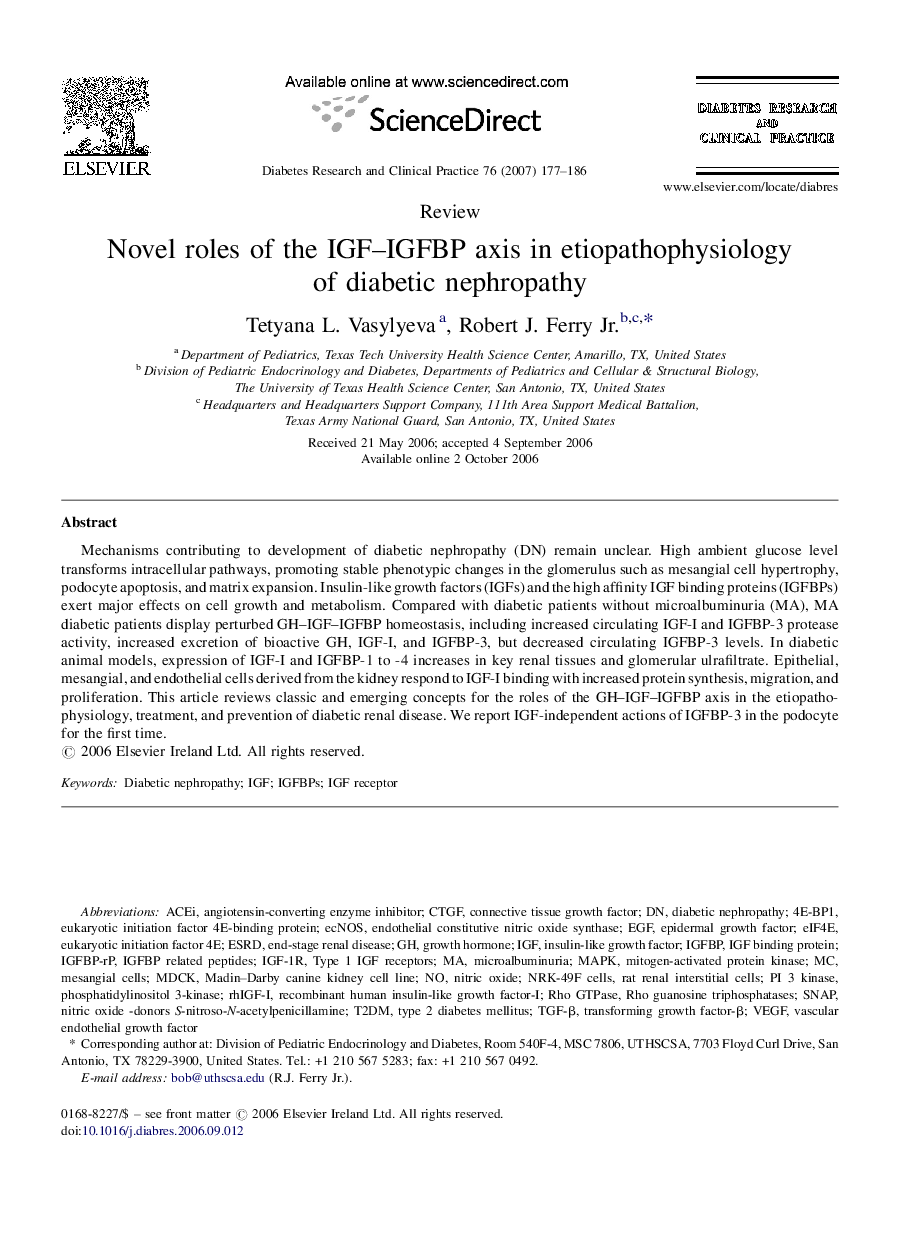| Article ID | Journal | Published Year | Pages | File Type |
|---|---|---|---|---|
| 2798886 | Diabetes Research and Clinical Practice | 2007 | 10 Pages |
Abstract
Mechanisms contributing to development of diabetic nephropathy (DN) remain unclear. High ambient glucose level transforms intracellular pathways, promoting stable phenotypic changes in the glomerulus such as mesangial cell hypertrophy, podocyte apoptosis, and matrix expansion. Insulin-like growth factors (IGFs) and the high affinity IGF binding proteins (IGFBPs) exert major effects on cell growth and metabolism. Compared with diabetic patients without microalbuminuria (MA), MA diabetic patients display perturbed GH-IGF-IGFBP homeostasis, including increased circulating IGF-I and IGFBP-3 protease activity, increased excretion of bioactive GH, IGF-I, and IGFBP-3, but decreased circulating IGFBP-3 levels. In diabetic animal models, expression of IGF-I and IGFBP-1 to -4 increases in key renal tissues and glomerular ulrafiltrate. Epithelial, mesangial, and endothelial cells derived from the kidney respond to IGF-I binding with increased protein synthesis, migration, and proliferation. This article reviews classic and emerging concepts for the roles of the GH-IGF-IGFBP axis in the etiopathophysiology, treatment, and prevention of diabetic renal disease. We report IGF-independent actions of IGFBP-3 in the podocyte for the first time.
Keywords
CTGF4E-BP1T2DMeIF4EIGF-1RMDCKRho GTPaseIGFBPIGFBPsrhIGF-IecNOSPI 3 kinaseIGFTGF-βeukaryotic initiation factor 4E-binding proteinEGFMAPKESRD یا end stage renal diseaseEnd-stage renal diseasetransforming growth factor-βType 2 diabetes mellitusmesangial cellsendothelial constitutive nitric oxide synthaseSNAPeukaryotic initiation factor 4Eepidermal growth factorVascular endothelial growth factorVascular Endothelial Growth Factor (VEGF)Connective tissue growth factorInsulin-like growth factorPhosphatidylinositol 3-kinaseACEI یا angiotensin convert enzyme inhibitorangiotensin-converting enzyme inhibitormicroalbuminuriaDiabetic nephropathyNitric oxideGrowth hormoneIGF binding proteinmitogen-activated protein kinaseIGF receptor
Related Topics
Life Sciences
Biochemistry, Genetics and Molecular Biology
Endocrinology
Authors
Tetyana L. Vasylyeva, Robert J. Jr.,
